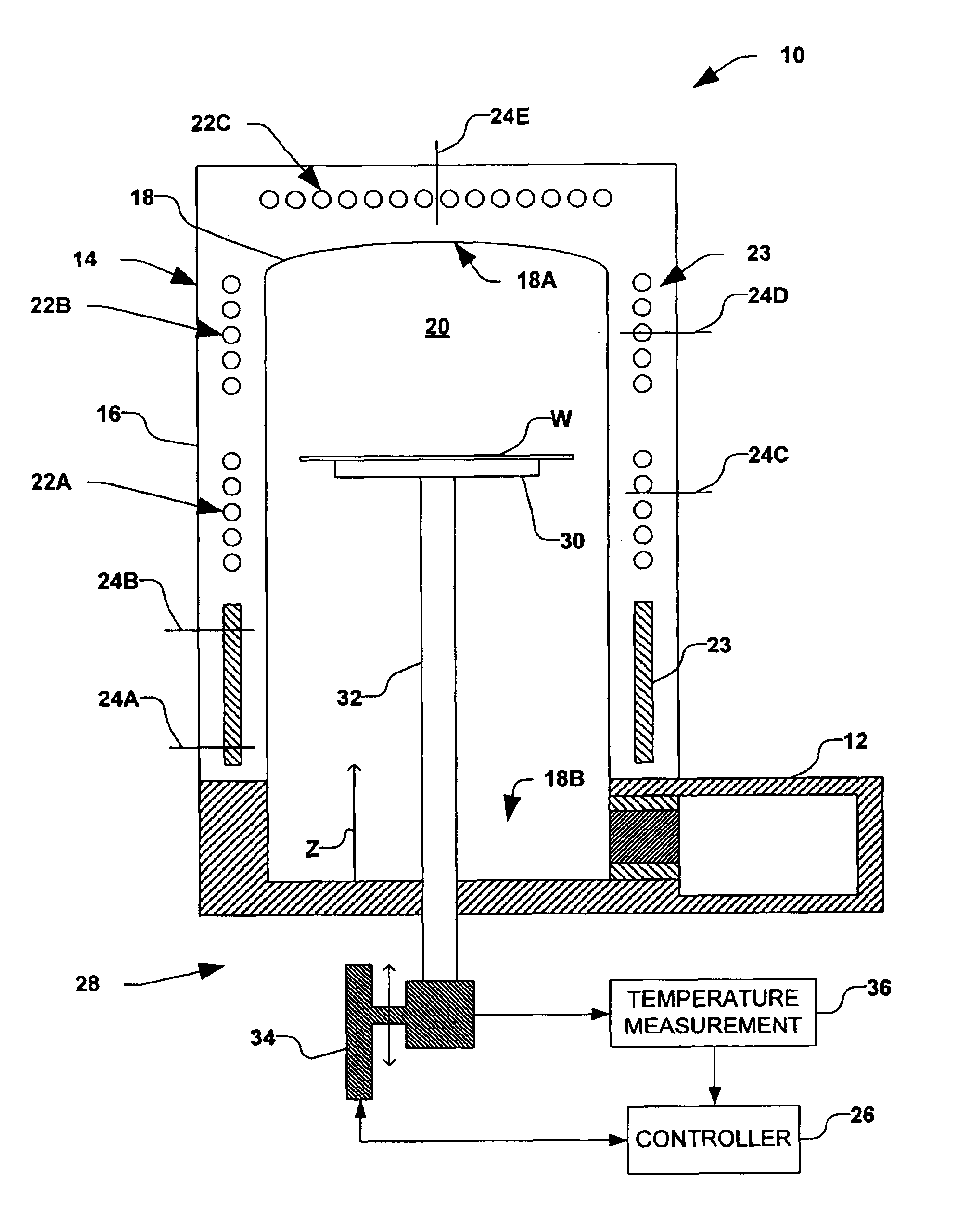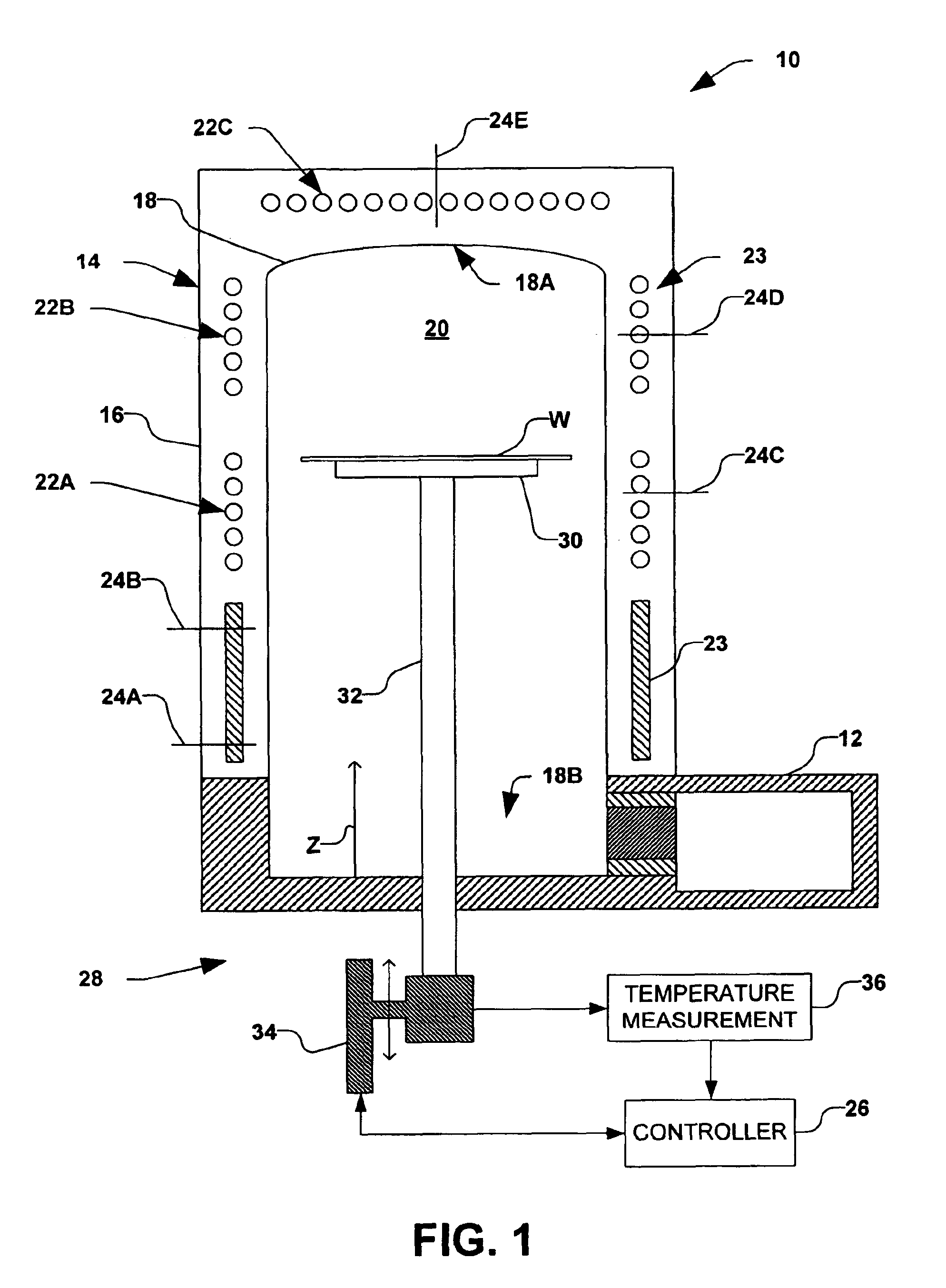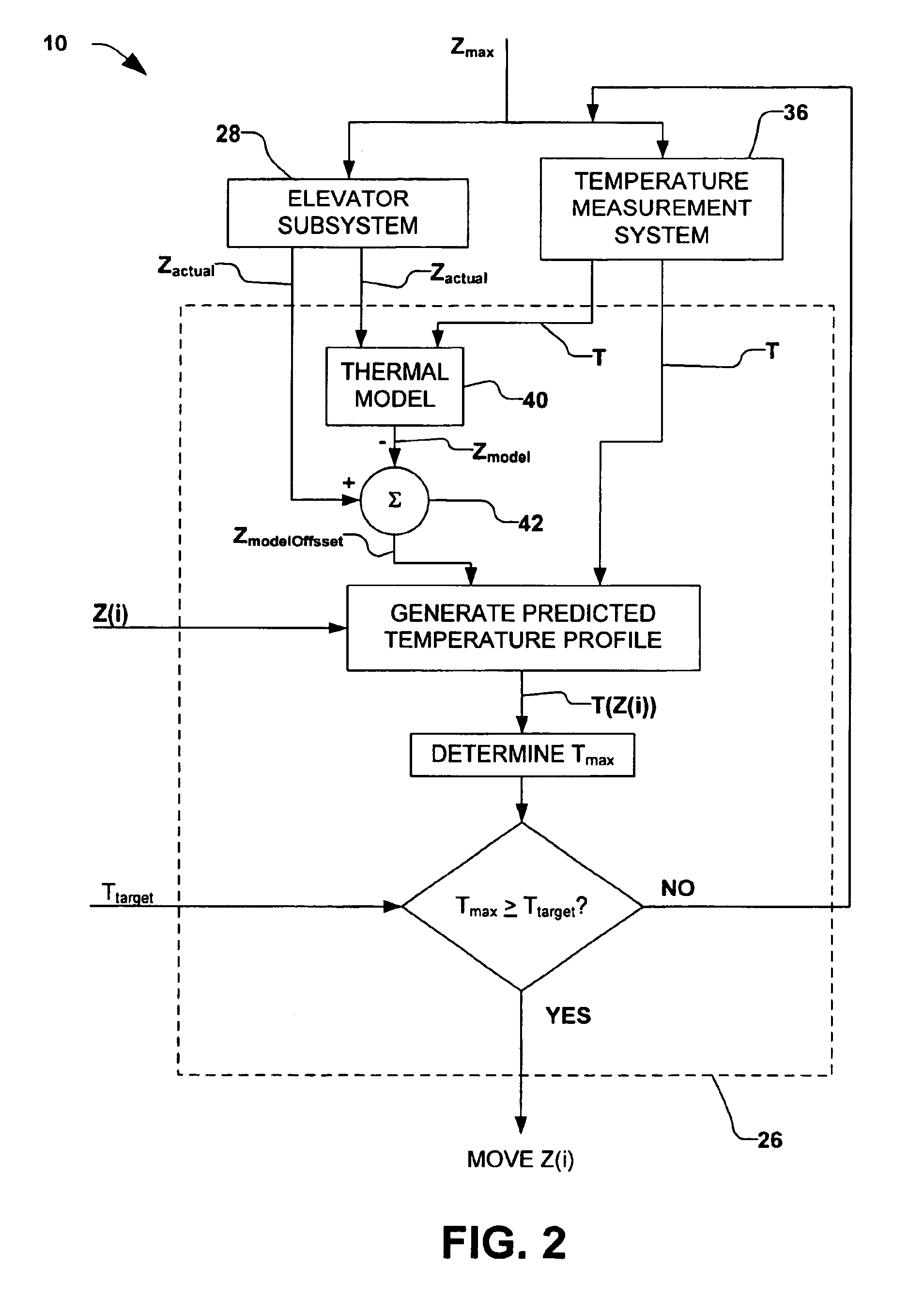Wafer temperature trajectory control method for high temperature ramp rate applications using dynamic predictive thermal modeling
a technology of dynamic prediction and thermal modeling, applied in the field of thermodynamic modeling and control of the thermal processing of the substrate, can solve the problems of deleting the total range and maximum value of the radial non-uniformity, affecting the efficiency of the heat exchange process, so as to achieve the effect of minimizing the error in the thermal process
- Summary
- Abstract
- Description
- Claims
- Application Information
AI Technical Summary
Benefits of technology
Problems solved by technology
Method used
Image
Examples
Embodiment Construction
The present invention is generally directed towards a method for thermally processing a substrate. In particular, an amount of heat exposed to the substrate is controlled by predicting a temperature profile of the substrate with respect to time and comparing the prediction to a target value or profile. Accordingly, the present invention will now be described with reference to the drawings, wherein like reference numerals are used to refer to like elements throughout. It should be understood that the description of these aspects are merely illustrative and that they-should not be taken in a limiting sense. In the following description, for purposes of explanation, numerous specific details are set forth in order to provide a thorough understanding of the present invention. It will be evident to one skilled in the art, however, that the present invention may be practiced without these specific details.
In accordance with one aspect of the present invention, a method for thermally proce...
PUM
| Property | Measurement | Unit |
|---|---|---|
| temperature | aaaaa | aaaaa |
| temperature | aaaaa | aaaaa |
| temperature | aaaaa | aaaaa |
Abstract
Description
Claims
Application Information
 Login to View More
Login to View More - R&D
- Intellectual Property
- Life Sciences
- Materials
- Tech Scout
- Unparalleled Data Quality
- Higher Quality Content
- 60% Fewer Hallucinations
Browse by: Latest US Patents, China's latest patents, Technical Efficacy Thesaurus, Application Domain, Technology Topic, Popular Technical Reports.
© 2025 PatSnap. All rights reserved.Legal|Privacy policy|Modern Slavery Act Transparency Statement|Sitemap|About US| Contact US: help@patsnap.com



